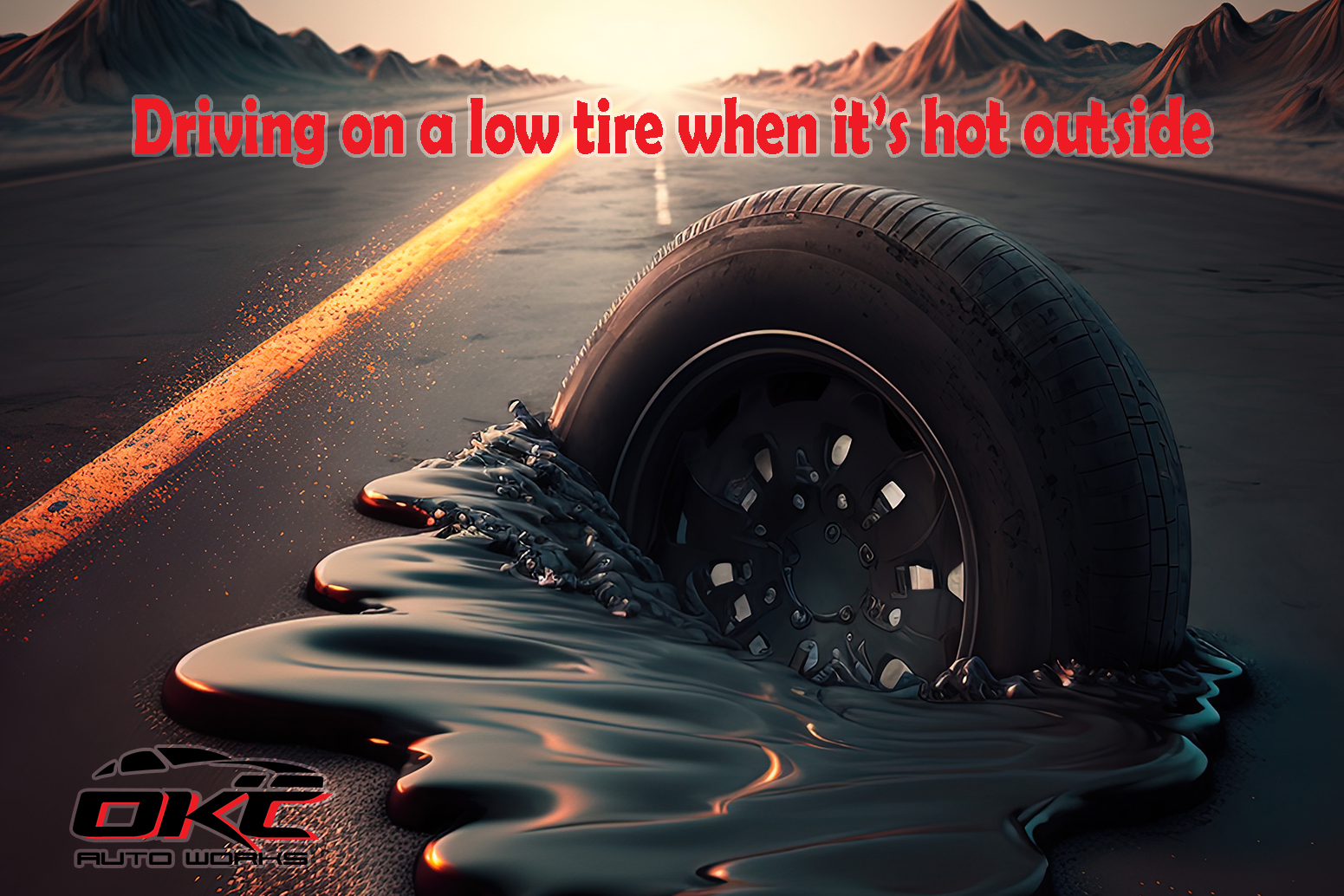It has been extremely hot this summer here in Oklahoma. We are all aware how the heat affects our bodies, as well as our electric bills, but many don’t realize that this heat also has an effect on your vehicle’s tires. Extreme temperatures, both cold and hot, affect your tires…add to it low tires pressure and it’s a perfect storm for unwanted & unintended consequences. Driving on a low tire when it’s extremely hot outside can have consequences, as the combination of hot temperatures and reduced tire pressure can negatively impact both the tire and the vehicle’s overall performance. Here are nine potential consequences of driving on a low tire when it is hot outside:
- Tire Blowout: Hot temperatures cause the air inside the tire to expand, which can exacerbate the effects of low tire pressure. If a tire is already underinflated, the increased pressure from the heat can lead to a tire blowout. A blowout can result in loss of control of the vehicle and potentially lead to accidents.
- Reduced Handling and Control: Underinflated tires have less contact with the road, which can lead to reduced traction and compromised handling. This effect can be magnified in hot weather, making it more difficult to steer, brake, and navigate corners safely.
- Increased Wear and Tear: Driving on underinflated tires generates more heat due to increased flexing of the tire’s sidewalls. In extremely hot conditions, this additional heat can cause the tire’s rubber to degrade more quickly, leading to increased wear and potentially decreasing the tire’s lifespan.
- Decreased Fuel Efficiency: Underinflated tires create more rolling resistance, which requires the engine to work harder to maintain the same speed. This can result in decreased fuel efficiency and increased fuel consumption.
- Uneven Tire Wear: Low tire pressure can lead to uneven tire wear, as different parts of the tire bear different loads. This can result in the need for premature tire replacement and may also contribute to handling issues.
- Overheating and Structural Damage: The combination of underinflation and high temperatures can cause the tire to overheat, leading to structural damage. This can weaken the tire’s internal components and increase the risk of tire failure.
- Risk of Hydroplaning: Underinflated tires are more prone to hydroplaning on wet roads, as they struggle to evacuate water effectively. In hot weather, sudden rain showers can create hazardous conditions, and underinflated tires can exacerbate the risk of hydroplaning.
- Increased Stopping Distance: Inadequate tire pressure can lead to longer braking distances, as the tires have reduced grip on the road. This can be especially dangerous in emergency braking situations.
- Increased Risk of an Auto Accident: With less stability and “grippiness” or contact to the road because of low tire pressure, your ability to safely control a vehicle diminishes, potentially ending in a wreck.
To prevent these potential consequences, it’s important to regularly check your tire pressure and ensure it’s at the recommended level, especially during extreme weather conditions like hot temperatures. Refer to your vehicle’s owner’s manual or the label inside the driver’s door frame for the recommended tire pressure values. If you notice that a tire is consistently losing pressure, it’s crucial to inspect the tire for punctures or leaks and address the issue promptly. Does your car need tires or wheel alignment? OKC Auto Works can help; give us a call at (405) 634-8200.

